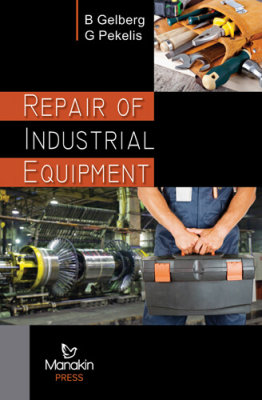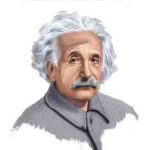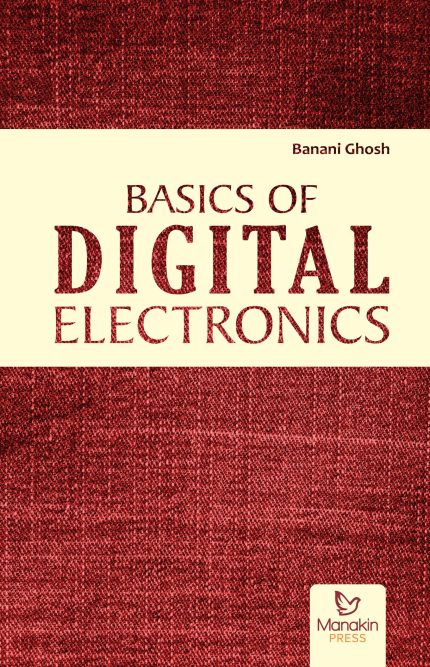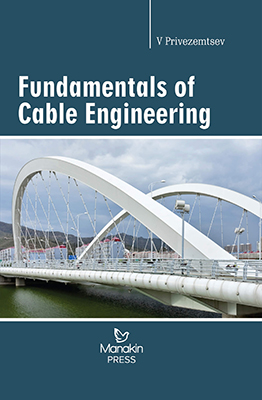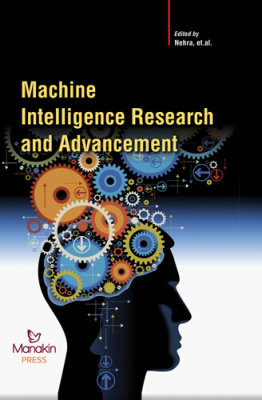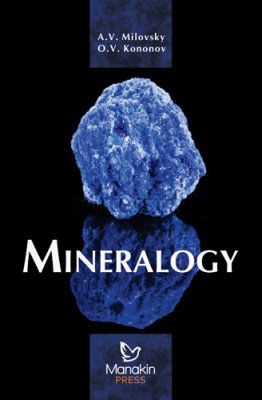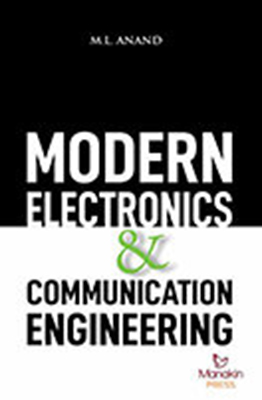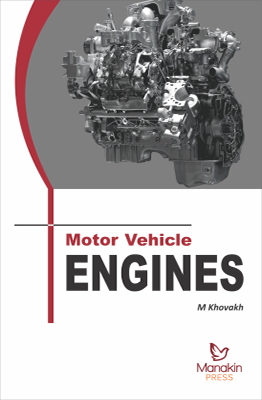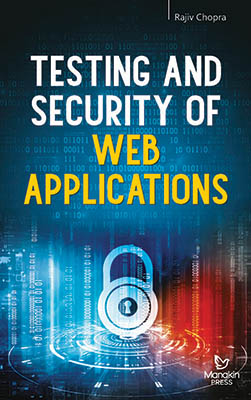Repair of Industrial Equipment
₹1,595.00
B. Gelberg | G Pekelis | Category: Engineerin
Binding Type: Hard Binding
Book Details
ISBN: 9789384370060
YOP: 2016
Pages: 300
Order also onSystematic care and attention are required to keep equipment in good working order, as well as regular maintenance and skilled repairs. In the construction industry, a general system of planned or scheduled preventive maintenance is used not only to keep equipment at its rated productivity and original accuracy but also to ensure its full and uninterrupted service. The essence of this system is to give each machine or mechanism regular inspection and various preventive repairs at definite intervals according to a schedule, in addition to routine daily maintenance. The length of the scheduled intervals, of course, depends on the specific features of the design of the equipment, its purpose, and its operating conditions. At any industrial enterprise this system has the following objectives:
(a) maintenance of equipment in a condition ensuring normal productivity and reliable quality of output;
(b) prevention of unexpected or accidental breakdowns of equipment;
(c) increase of productivity through improvements and modifications made during scheduled overhauls.
These objectives are achieved through two forms of maintenance:
1. Routine servicing between scheduled overhauls
2. Periodic scheduled repairs, consisting of minor and medium-scale repairs and major overhauls.
Routine technical servicing includes such basic tasks as the inspection and checking of the technical condition of assemblies and units and of the machine or equipment as a whole; routine correction of minor faults and adjustment of parts and mechanisms; lubrication, etc. This routine maintenance is the responsibility of the operators of the machines as well as of the maintenance service.
Part1- General Information on Mechanisms, Machines and Material Handling Equipment
1. Basic Information on Mechanisms, Machines and Machine Parts
1.1 Concept of Mechanisms, Machines and Machine Parts
1.2 Drives
1.3 Basic Concepts of Motion Transmissions
1.4 Mechanisms for the Transmission of Rotary Motion
1.5 Mechanisms for the Conversion of Motion
1.6 Safety Devices
1.7 Typical Elements for the Transmission of Rotary Motion
Test Questions
2. Material Handling Equipment
2.1 Material Handling Equipment Used During Repairs
2.2 Ropes, Rope Slings and Fittings
2.3 Safety Rules for Material Handling Jobs
Test Questions
Part2- Wear and Service Life of Industrial Equipment Assembly of Mechanisms and Machines
3. Methods of Assembly and Fitting
3.1 Concept of Assembly Methods
3.2 Assembly of Fixed Joints Threaded Joints
3.3 Keyed and Splined Joints
3.4 Assembly of Units with Ball and Roller Bearings
3.5 Assembly of Belt Drives
3.6 Assembly of Gear and Worm Drive
3.7 Soldering
3.8 Tinning
3.9 Glueing in Repair and Assembly
Test Questions
4. Wear of Machines
4.1 General
4.2 Defects Due to Wear of Equipment
4.3 Determining the Degree of Wear
4.4 Maximum Permissible Wear
Test Questions
5. Increasing the Service Life of Equipment
5.1 General
5.2 Increasing Service Life by Improved Lubrication
Test Questions
6. Recovery and Strengthening of Machine Elements
6.1 Hand Welding and Arc-Weld Surfacing
6.2 Automatic Welding and Arc-Weld Surfacing
6.3 Recovery by Metal Spraying
6.4 Non-Ferrous Metal Surfacing
6.5 Recovery and Surface Hardening by Electrolytic and Thermochemical Methods
6.6 Recovery and Hard-Facing by Electric Spark Discharge
6.7 Selecting a Method for the Recovery and Surfacing of Parts
Test Questions
Part3- Technology of Repair of Industrial Equipment
7. Maintenance of Fixed Joints and Piping
7.1 Fixed Joints
7.2 Piping
Test Questions
8. Maintenance of Hydraulic and Pneumatic Devices
8.1 Fault Detection and Remedy
8.2 Hydraulic System: Cylinders, Rods and Pistons
8.3 Pumps, Adjusting and Control Devices of Hydraulic Systems
8.4 Pneumatic and Pneumohydraulic Drives
Test Questions
9. Maintenance of Parts and Mechanisms of Production Equipment
9.1 Shafts
9.2 Plain Bearings
9.3 Ball and Roller Bearings
9.4 Couplings and Clutches
9.5 Gear Wheels
9.6 Pulleys
9.7 Piston and Running Gear Elements
9.8 Lead Screws and Nuts
9.9 Link Motion Mechanisms
Test Questions
10. Repair of Bed and Housing-Type Parts
10.1 Restoring the Bedways of a Lathe
10.2 Restoring the Column Ways of a Plain Milling Machine
10.3 Restoring the Saddle Ways of a Lathe
10.4 Restoring the Knee Ways of a Milling Machine
10.5 Restoring the Table Ways of a Milling Machine
10.6 Restoring Clamping Blocks and Wedges
Test Questions
11. Equipment Repair and Acceptance Procedures
11.1 Rules for Assigning Equipment to Repair
11.2 Sequence of Disassembly Operations During Repairs of Industrial Equipment
11.3 Washing of Parts and Fault Finding
11.4 Dimension Chains
11.5 Balancing of Parts
11.6 Assembly of a Spindle Unit
11.7 General Assembly of Machines
11.8 Repaired Equipment Acceptance Tests
Test Questions
Part4- Organization of Repair and Modernization of Equipment
12. Organization of Maintenance Service
12.1 Types of Maintenance Service
12.2 Interchangeable Unit Method of Machine-Tool Repair
12.3 Planned Preventive Maintenance
12.4 Routine Servicing
12.5 Maintenance and Repair Schedules
12.6 Repair Schedule and Downtime
Test Questions
13. Modernization of Equipment
13.1 Essence and Principal Trends
13.2 Reducing Machining Time
13.3 Reducing Handling Time
13.4 Improving the Versatility of Equipment
13.5 Automating the Machining Process
Test Questions
Part5- General Information on Industrial Equipment and Safety Rules
14. Design of Main Types of Equipment and Their Maintenance Characteristics
14.1 Classification of Industrial Equipment
14.2 Metal-Cutting Machines
14.3 Machine-Tool Repair and Maintenance Features
14.4 Forging Equipment and Presses
14.5 Repair and Maintenance Features of Forging Equipment and Presses
14.6 Material Handling Equipment
14.7 Machine Production Accuracy
Test Questions
15. Mechanization and Automation of Production
15.1 Basic Concepts of Mechanization and Automation
15.2 Main Types of Automation
15.3 Automatic Means and Instrumentation
15.4 Elements and Units of Automatic Systems
15.5 Numerical Control of Machines
15.6 Production on Automatic Transfer Lines
15.7 Transfer Line Conveying Devices
15.8 Repair and Maintenance of Transfer Line Equipment
Test Questions
16. Safety Rules and Fire Safety Measures
16.1 Precautions to be Taken in the Shops or on the Premises of the Works
16.2 Safety Rules in Maintenance
16.3 Safety Rules for Materials Handling Equipment
16.4 Safety Rules for Electric Devices
16.5 First Aid
16.6 Fire Safety Measures
16.7 Dealing with Fire Emergency
Test Questions
Systematic care and attention are required to keep equipment in good working order, as well as regular maintenance and skilled repairs. In the construction industry, a general system of planned or scheduled preventive maintenance is used not only to keep equipment at its rated productivity and original accuracy but also to ensure its full and uninterrupted service. The essence of this system is to give each machine or mechanism regular inspection and various preventive repairs at definite intervals according to a schedule, in addition to routine daily maintenance. The length of the scheduled intervals, of course, depends on the specific features of the design of the equipment, its purpose, and its operating conditions. At any industrial enterprise this system has the following objectives:
(a) maintenance of equipment in a condition ensuring normal productivity and reliable quality of output;
(b) prevention of unexpected or accidental breakdowns of equipment;
(c) increase of productivity through improvements and modifications made during scheduled overhauls.
These objectives are achieved through two forms of maintenance:
1. Routine servicing between scheduled overhauls
2. Periodic scheduled repairs, consisting of minor and medium-scale repairs and major overhauls.
Routine technical servicing includes such basic tasks as the inspection and checking of the technical condition of assemblies and units and of the machine or equipment as a whole; routine correction of minor faults and adjustment of parts and mechanisms; lubrication, etc. This routine maintenance is the responsibility of the operators of the machines as well as of the maintenance service.
Part1- General Information on Mechanisms, Machines and Material Handling Equipment
1. Basic Information on Mechanisms, Machines and Machine Parts
1.1 Concept of Mechanisms, Machines and Machine Parts
1.2 Drives
1.3 Basic Concepts of Motion Transmissions
1.4 Mechanisms for the Transmission of Rotary Motion
1.5 Mechanisms for the Conversion of Motion
1.6 Safety Devices
1.7 Typical Elements for the Transmission of Rotary Motion
Test Questions
2. Material Handling Equipment
2.1 Material Handling Equipment Used During Repairs
2.2 Ropes, Rope Slings and Fittings
2.3 Safety Rules for Material Handling Jobs
Test Questions
Part2- Wear and Service Life of Industrial Equipment Assembly of Mechanisms and Machines
3. Methods of Assembly and Fitting
3.1 Concept of Assembly Methods
3.2 Assembly of Fixed Joints Threaded Joints
3.3 Keyed and Splined Joints
3.4 Assembly of Units with Ball and Roller Bearings
3.5 Assembly of Belt Drives
3.6 Assembly of Gear and Worm Drive
3.7 Soldering
3.8 Tinning
3.9 Glueing in Repair and Assembly
Test Questions
4. Wear of Machines
4.1 General
4.2 Defects Due to Wear of Equipment
4.3 Determining the Degree of Wear
4.4 Maximum Permissible Wear
Test Questions
5. Increasing the Service Life of Equipment
5.1 General
5.2 Increasing Service Life by Improved Lubrication
Test Questions
6. Recovery and Strengthening of Machine Elements
6.1 Hand Welding and Arc-Weld Surfacing
6.2 Automatic Welding and Arc-Weld Surfacing
6.3 Recovery by Metal Spraying
6.4 Non-Ferrous Metal Surfacing
6.5 Recovery and Surface Hardening by Electrolytic and Thermochemical Methods
6.6 Recovery and Hard-Facing by Electric Spark Discharge
6.7 Selecting a Method for the Recovery and Surfacing of Parts
Test Questions
Part3- Technology of Repair of Industrial Equipment
7. Maintenance of Fixed Joints and Piping
7.1 Fixed Joints
7.2 Piping
Test Questions
8. Maintenance of Hydraulic and Pneumatic Devices
8.1 Fault Detection and Remedy
8.2 Hydraulic System: Cylinders, Rods and Pistons
8.3 Pumps, Adjusting and Control Devices of Hydraulic Systems
8.4 Pneumatic and Pneumohydraulic Drives
Test Questions
9. Maintenance of Parts and Mechanisms of Production Equipment
9.1 Shafts
9.2 Plain Bearings
9.3 Ball and Roller Bearings
9.4 Couplings and Clutches
9.5 Gear Wheels
9.6 Pulleys
9.7 Piston and Running Gear Elements
9.8 Lead Screws and Nuts
9.9 Link Motion Mechanisms
Test Questions
10. Repair of Bed and Housing-Type Parts
10.1 Restoring the Bedways of a Lathe
10.2 Restoring the Column Ways of a Plain Milling Machine
10.3 Restoring the Saddle Ways of a Lathe
10.4 Restoring the Knee Ways of a Milling Machine
10.5 Restoring the Table Ways of a Milling Machine
10.6 Restoring Clamping Blocks and Wedges
Test Questions
11. Equipment Repair and Acceptance Procedures
11.1 Rules for Assigning Equipment to Repair
11.2 Sequence of Disassembly Operations During Repairs of Industrial Equipment
11.3 Washing of Parts and Fault Finding
11.4 Dimension Chains
11.5 Balancing of Parts
11.6 Assembly of a Spindle Unit
11.7 General Assembly of Machines
11.8 Repaired Equipment Acceptance Tests
Test Questions
Part4- Organization of Repair and Modernization of Equipment
12. Organization of Maintenance Service
12.1 Types of Maintenance Service
12.2 Interchangeable Unit Method of Machine-Tool Repair
12.3 Planned Preventive Maintenance
12.4 Routine Servicing
12.5 Maintenance and Repair Schedules
12.6 Repair Schedule and Downtime
Test Questions
13. Modernization of Equipment
13.1 Essence and Principal Trends
13.2 Reducing Machining Time
13.3 Reducing Handling Time
13.4 Improving the Versatility of Equipment
13.5 Automating the Machining Process
Test Questions
Part5- General Information on Industrial Equipment and Safety Rules
14. Design of Main Types of Equipment and Their Maintenance Characteristics
14.1 Classification of Industrial Equipment
14.2 Metal-Cutting Machines
14.3 Machine-Tool Repair and Maintenance Features
14.4 Forging Equipment and Presses
14.5 Repair and Maintenance Features of Forging Equipment and Presses
14.6 Material Handling Equipment
14.7 Machine Production Accuracy
Test Questions
15. Mechanization and Automation of Production
15.1 Basic Concepts of Mechanization and Automation
15.2 Main Types of Automation
15.3 Automatic Means and Instrumentation
15.4 Elements and Units of Automatic Systems
15.5 Numerical Control of Machines
15.6 Production on Automatic Transfer Lines
15.7 Transfer Line Conveying Devices
15.8 Repair and Maintenance of Transfer Line Equipment
Test Questions
16. Safety Rules and Fire Safety Measures
16.1 Precautions to be Taken in the Shops or on the Premises of the Works
16.2 Safety Rules in Maintenance
16.3 Safety Rules for Materials Handling Equipment
16.4 Safety Rules for Electric Devices
16.5 First Aid
16.6 Fire Safety Measures
16.7 Dealing with Fire Emergency
Test Questions
| Weight | 0.645 kg |
|---|---|
| Dimensions | 24.2 × 16.3 × 2 cm |
| yop |
2016 |
| subject-category |
Engineering |
| isbn |
9789384370060 |

